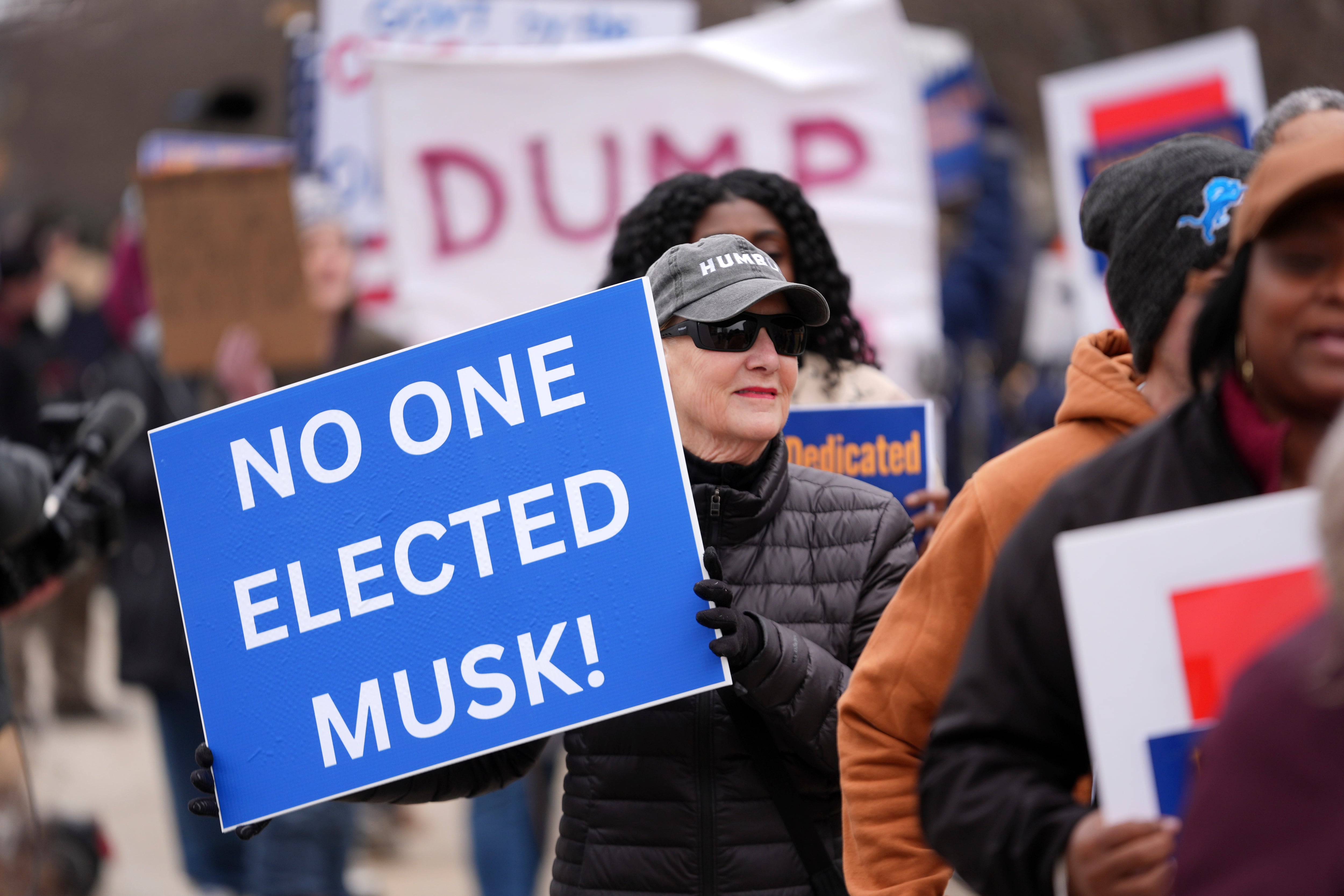President Donald Trump and Defense Secretary Mark Esper were in attendance Saturday to “bid bon voyage” to one of the Navy’s two hospital ships, the USNS Comfort, as the 1,200-person vessel departed Norfolk, Virginia, for New York City nearly four weeks ahead of its original schedule.
In New York, the Comfort will take on non-coronavirus patients facing life-threatening ailments to alleviate the burden of the city’s increasingly overflowing hospitals. The Navy’s other hospital ship, the Mercy, arrived in Los Angeles Friday with an identical mission.
“The United States is at war with an invisible enemy in the coronavirus,” President Trump declared Saturday from the Naval Station Norfolk pier.
“We are marshalling the full power of the American nation — economic, scientific, medical and military — to vanquish the virus. I’m here to express my profound gratitude to the dedicated service members who will soon be on the front lines of this fight. ... This great ship behind me is a 70,000-ton message of hope and solidarity to the incredible people of New York.”
Symbolism aside, sending a crew comprising young sailors — a demographic capable, according to the Centers for Disease Control and Prevention, of carrying COVID-19 without presenting symptoms — to treat patients with compromised immune systems has raised concern among crew and family members.
“We know that the traditional symptoms don’t show themselves the same way in the young, healthy population as they do in the older and medically fragile,” said a medical professional and spouse of one of the Comfort’s sailors, who spoke to Navy Times on the condition of anonymity.
“We also know how dangerous of a breeding ground a ship can be for a highly contagious pathogen. I work for our local hospital and am caring for patients everyday. I have no idea what I’ve been in contact with and have no idea what I’ve shared with my husband, and therefore, have no idea what he might have carried onto that ship.”
That concern was echoed Friday by retired Adm. James Stavridis, who emphasized that the living quarters and restricted spaces onboard a naval vessel could serve as “birthing compartments” for COVID-19.
Stavridis, the former supreme allied commander of NATO, cited the recent surge of coronavirus cases on the underway aircraft carrier Theodore Roosevelt, which, just one day after having three sailors test positive for COVID-19, yielded five more confirmed cases.
The virus’ proliferation onboard the Roosevelt forced the Navy to sideline the 5,000-person carrier in Guam so that every crew member could be tested, a process expected to take up to 25 days, Acting Secretary of the Navy Thomas Modly said Friday.
Exacerbating the concern of those with ties to the Comfort, meanwhile, is the current COVID-19 screening process, one instituted in accordance to CDC guidance — and one many, including the Comfort sailor’s spouse, believe to be considerably inadequate.
On Saturday, the Navy confirmed that the screening procedure for those embarking onboard the Comfort consists only of “a series of questions addressing [the] member’s recent health and contact history.”
Crew members also undergo a temperature check prior to embarking, the Navy said.
But these measures could prove insufficient, the healthcare professional and spouse told Navy Times, due to the crew of “young, healthy men and women who can be exposed to the virus and not show symptoms for up to 14 days.”
Additionally, the Navy confirmed the Comfort does not have the capability to test for COVID-19 onboard. However, “the crew has the ability to swab and send samples to designated laboratories.”
In the event any patients or staff begin to show symptoms, infection control procedures will be initiated, a U.S. 2nd Fleet spokesperson told Navy Times.
“Any personnel considered at risk for COVID-19 are immediately referred to shoreside medical personnel for evaluation,” the spokesperson said. “This protocol ensures that any at-risk personnel do not enter the skin of the ship. This is in alignment with DoD and CDC guidelines.”
Crew members will be provided personal protective equipment — including face masks, shields, protective suits, gloves, and boot covers — and practice preventative hygiene measures in alignment with CDC recommendations, the Navy release said.
The Comfort’s mission, despite concern, is one its crew remains proud to spearhead during this historic juncture, Navy officials said.
The sailors embarking on this critical undertaking were touted Friday by President Trump as “our military’s greatest weapon — a crew of nearly 1,200 outstanding members of the U.S. Navy, and I thank them very much.”
“Among the sailors departing today are some of the finest doctors, nurses, technicians, orderlies and medical staff anywhere in the world,” Trump added. "These are true professionals, and no one performs better under pressure when lives are on the line.”
The Comfort is expected to arrive in New York on Monday, where it will bring with it “12 operating rooms, [up to 1,000] hospital beds, a medical laboratory, a pharmacy, an optometry lab, digital radiology, a CAT scan, two oxygen-producing plants and a helicopter deck,” a DoD release said.
Crew onboard the Comfort, including the sailor whose spouse spoke to Navy Times, will begin treating patients the next day.
“We will see how this plays out,” the sailor’s spouse said.
"As a strong advocate for safety for not only my patients but my team of healthcare workers as well, I will not be quiet in my fight for truth and justice if anything happens to the passengers of the Comfort.”
J.D. Simkins is the executive editor of Military Times and Defense News, and a Marine Corps veteran of the Iraq War.





